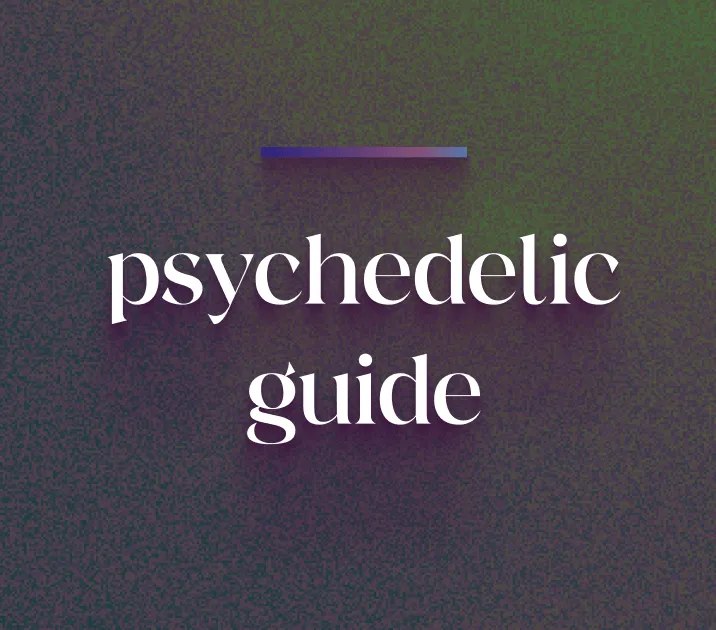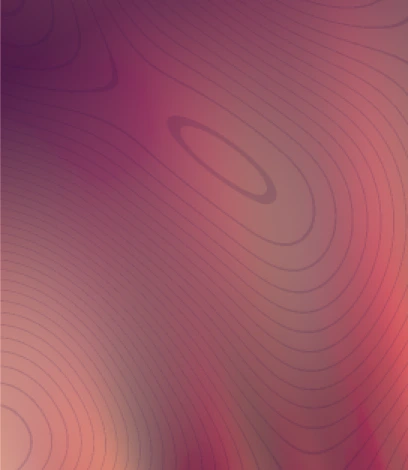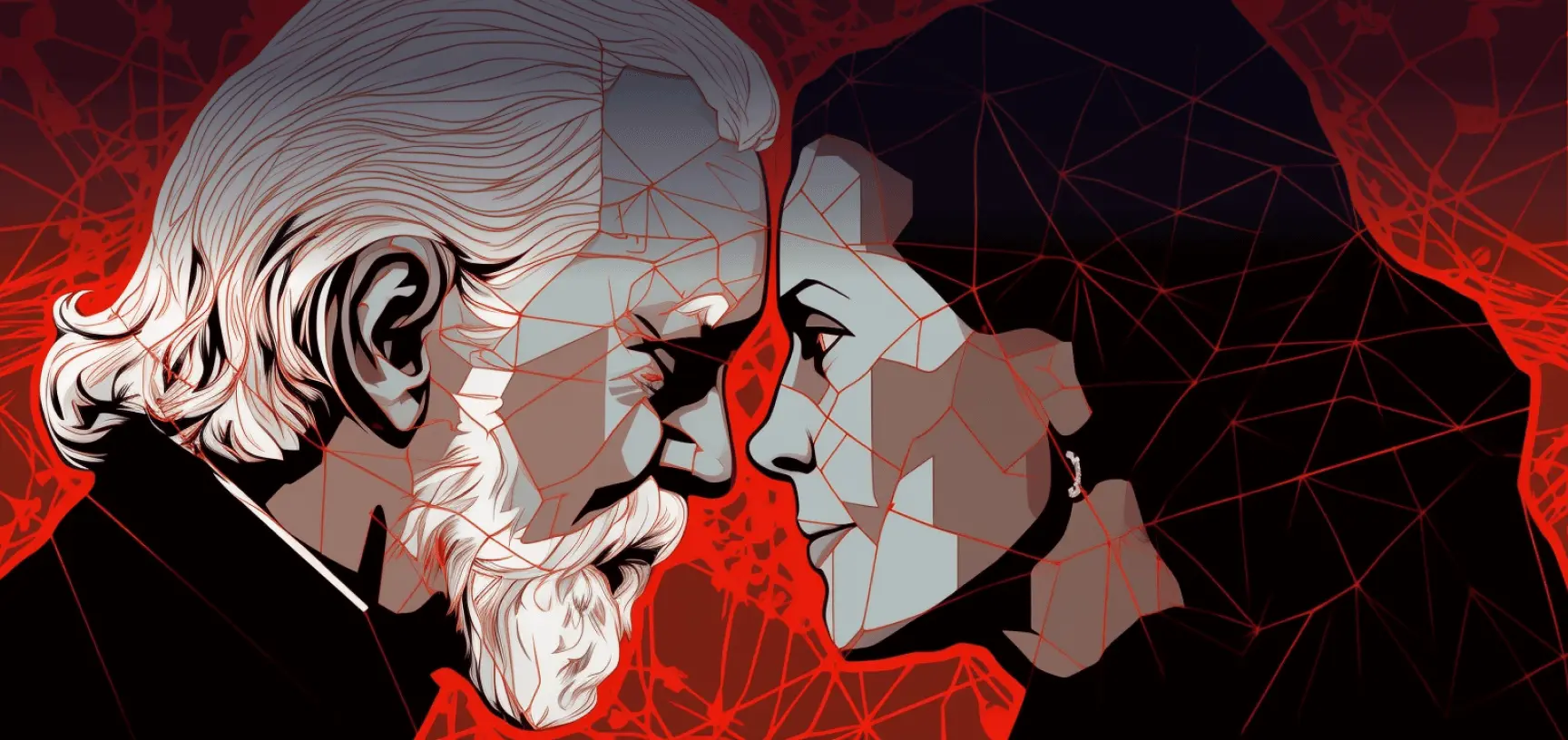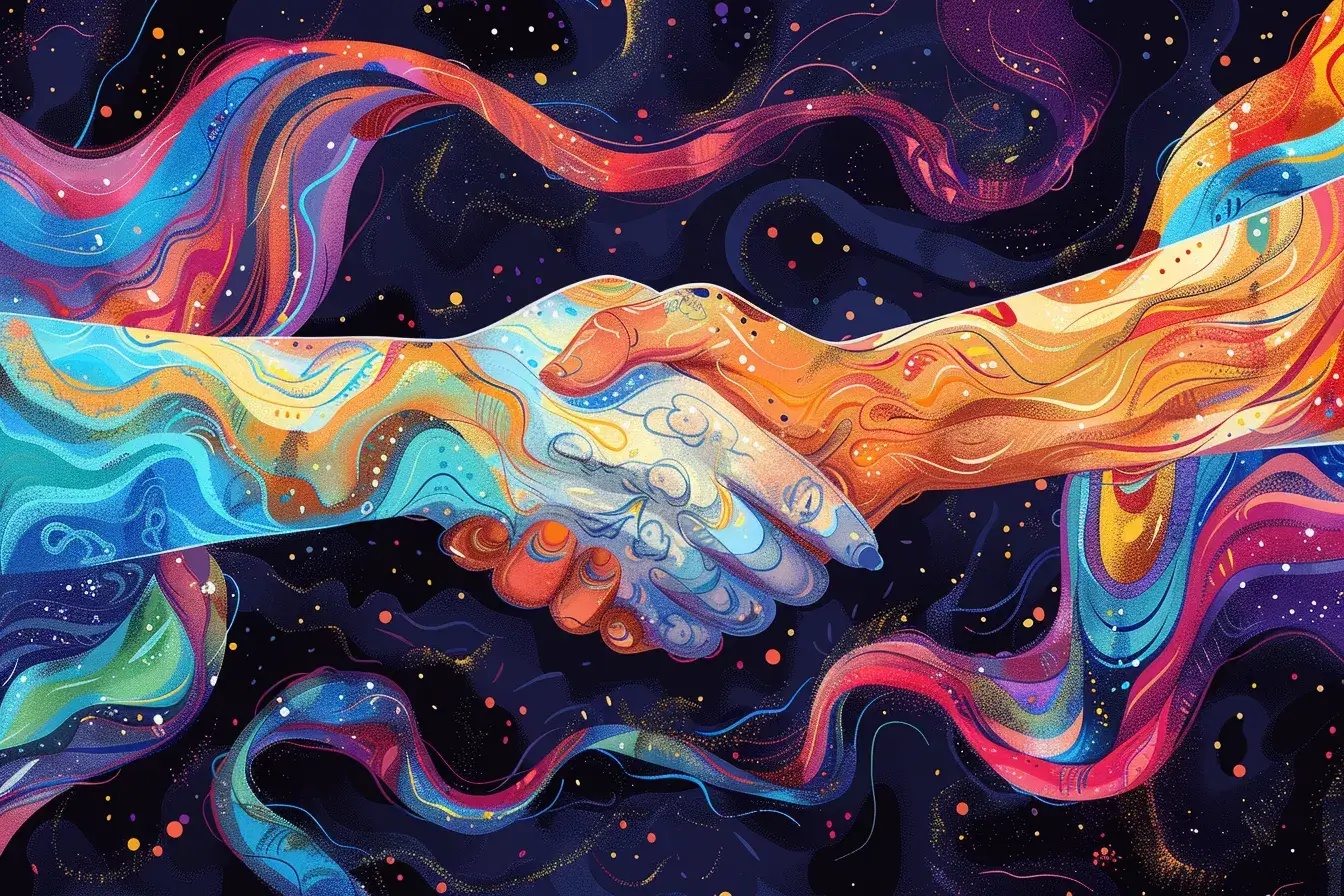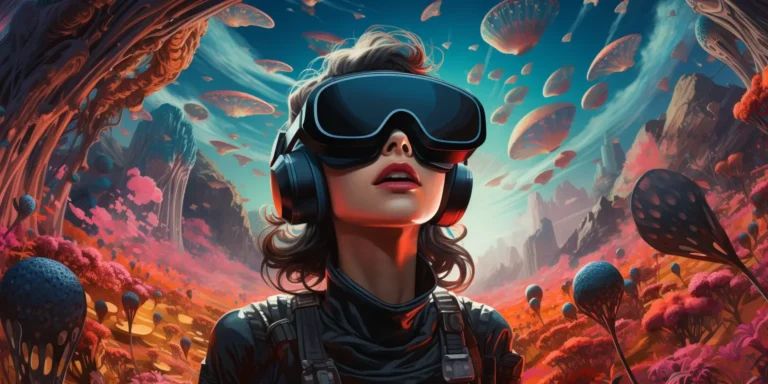When you think of “psychedelic drug myths,” you probably remember tall tales like “LSD Will Drive You Insane,” “MDMA Eats Holes In Your Brain,” and “Magic Mushrooms Cause Addiction.” These are just a few examples of the many myths and misconceptions widely spread about psychedelics. Most of these myths were spawned during the War on Drugs era, which saw campaigns like “Your Brain on Drugs” use scare tactics to demonize psychedelic compounds.
This effort, driven more by politics than science, painted a grim picture of these substances. In reality, research suggests that psychedelics are, in fact, far less dangerous than alcohol or opioids. Psychedelics may also have neuroprotective properties, meaning they could protect brain cells from damage. Recent studies suggest that they can foster the creation of new neural pathways, potentially paving the way for innovative thoughts, ideas, and solutions to complex problems. This neuroplasticity could be a game-changer in treating various mental health conditions, offering hope where traditional treatments might have failed.(1, 2)
Another prevalent myth is the addictive nature of psychedelics. As we covered in a previous article, these substances don’t fit the typical profile of addictive drugs. The human body quickly builds a tolerance to psychedelics, making frequent use ineffective. Unlike substances that can lead to compulsive behaviors and physical dependence, psychedelics don’t induce such patterns. However, like any profound experience, they can be psychologically impactful, emphasizing the importance of responsible use and understanding.(3, 4)
Understanding fact from fiction and psychedelic myths from reality is an important step on your journey into the world of psychedelics. With that in mind, we have created our list of the top psychedelic drug myths that are totally false.
Keep Up with Psychedelic Trends
Don’t miss the latest psychedelic news, events, companies, and more.
We respect and protect your privacy. By subscribing your info will be subject to our privacy policy. Unsubscribe easily at any time
Psychedelic Drug Myth One: Taking LSD Seven Times Means You’re Legally Insane
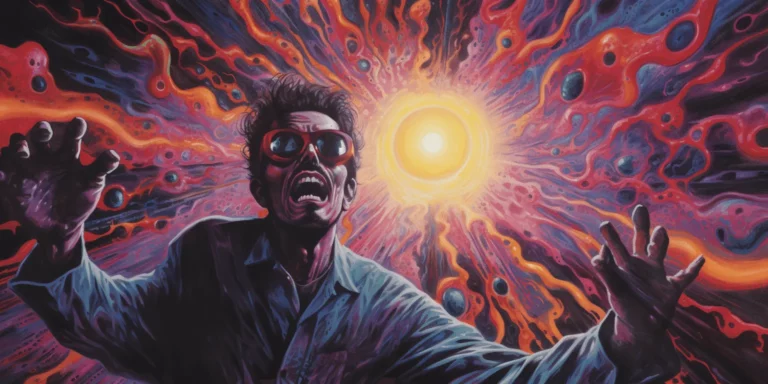
One of the most egregiously incorrect psychedelic drug myths to come out of the War on Drugs was the idea that taking LSD (lysergic acid diethylamide) seven times (or more) means that someone is automatically “legally insane.” This psychedelic myth likely originated from a combination of early, poorly controlled studies, anecdotal reports, and media sensationalism during the mid-20th century, when the cultural and political climate was rife with anti-drug sentiments. However, modern scientific understanding and comprehensive research have debunked this claim, shedding light on the actual effects and potential risks of LSD. It’s also important to note that this is an inaccurate and pretty silly way to use the term “legally insane” – as if you could take LSD a certain number of times and then somehow be absolved of all responsibility if you were to commit a crime.(5)
It’s essential to differentiate between the acute effects of LSD and long-term consequences. While LSD can produce profound alterations in perception, cognition, and emotion, these effects are temporary and wear off as the drug is metabolized. Most users return to their baseline psychological state once the drug’s effects have subsided. While there have been reports of individuals experiencing prolonged anxiety or perceptual changes after using LSD, these are not indicative of “insanity” and are relatively rare. Many of these cases often involve individuals with pre-existing mental health conditions and/or those who consume the drug in adverse settings. Some contraindications include a family history of schizophrenia or other major mental health disorders.(5)
It’s also worth noting that recent research into psychedelics, including LSD, has shown potential therapeutic benefits. Studies have suggested that, under controlled and supervised conditions, LSD might be beneficial for conditions like anxiety, depression, and PTSD.(5, 6)
Dr. David Nutt, a leading scientist studying LSD, has thoroughly debunked several LSD myths. In particular, the idea that LSD will drive someone insane. In fact, Dr. Nutt and other researchers have shown that LSD has potential as a tool in mental healthcare and may even boost creativity and neuroplasticity (your brain’s ability to grow new synapses or form new pathways).
Psychedelic Drug Myth Two: MDMA Will Eat Holes In Your Brain
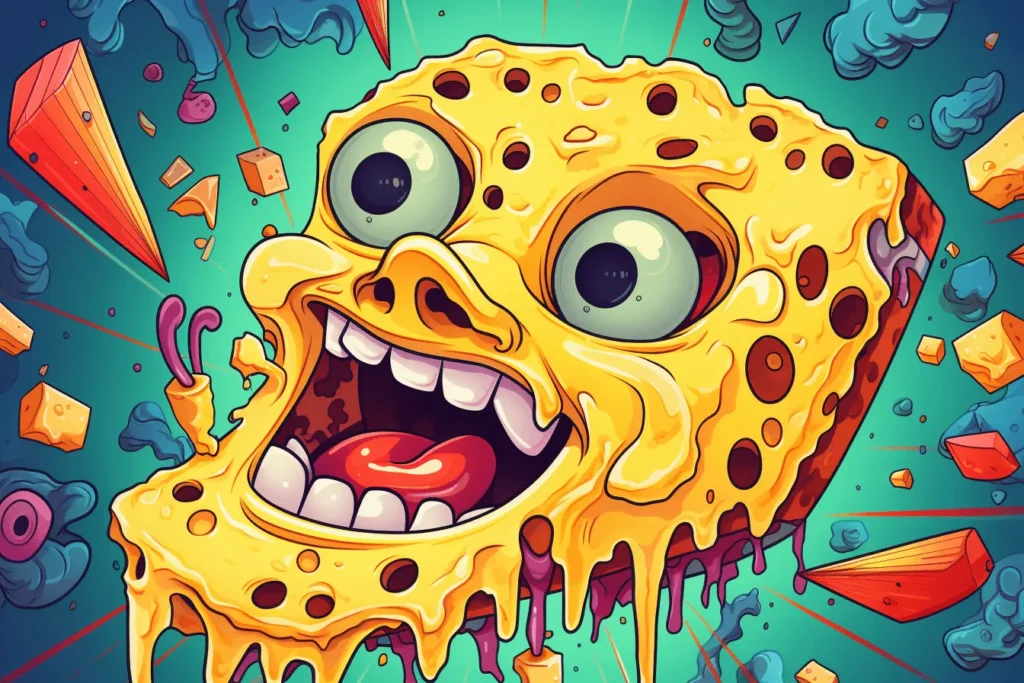
Another common of the many but completely inaccurate psychedelic drug myths involves MDMA. Essentially, this particular psychedelic myth claims that if you were to take MDMA even once, it would create holes in your brain. This tale is so widespread that it’s appeared in popular shows, especially in the early 2000s. For instance, in Showtimes’ hit series, Weeds, the oldest son, Silas, is brought home by the police after taking MDMA (called ecstasy in the show). The officer then proceeds to tell his mother, Nancy, that taking MDMA just once was akin to digging “ice cream scoops out the brain.”
You may also be familiar with the classic “This is Your Brain on Drugs,” PSA from the nineties, where a fried egg is dropped into a pan to spatter and fry, implying drugs do the same to the brain. While effective, this is another example of myths informing politically motivated messaging about drug use.
Keep Up with Psychedelic Trends
Don’t miss the latest psychedelic news, events, companies, and more.
We respect and protect your privacy. By subscribing your info will be subject to our privacy policy. Unsubscribe easily at any time
This is, of course, false and likely originates from a 2002 study published in the U.S.-based scientific journal Science. That study, which intended to measure the neurotoxicity of MDMA, saw several apes given massive doses of what researchers thought was the correct drug. As it turns out, there was a mix-up, and the drug administered was methamphetamine. It goes without saying that meth is one of the most dangerous drugs a person can take, and giving an ape several times the recreational dose would likely cause some damage. Fortunately, Science was forced to retract the study, and the researchers admitted they made a mistake. However, this happened long after the damage was done, and headlines like “MDMA Puts Holes in Your Brain” had already spread far and wide.(7, 8)
In recent years, researchers, such as the authors of Neuroimaging in Moderate MDMA Use: A Systematic Review, examined multiple neuroimaging studies involving human subjects who used MDMA. They found “no clear evidence from neuroimaging techniques that MDMA induces changes in the human brain.” Adding, “This also implies that there is currently no clear evidence from neuroimaging that the use of MDMA as an additive in psychotherapy should be regarded as dangerous.” Other research, such as the multiple clinical trials conducted by the Multidisciplinary Association for Psychedelic Studies, has found that MDMA is unlikely to be neurotoxic and, in a clinical setting, typically does not cause an MDMA hangover, aka the “Tuesday Blues.” Some users may even experience something known as an “afterglow.”(7, 8)
Psychedelic Drug Myth Three: LSD Can Damage Your DNA
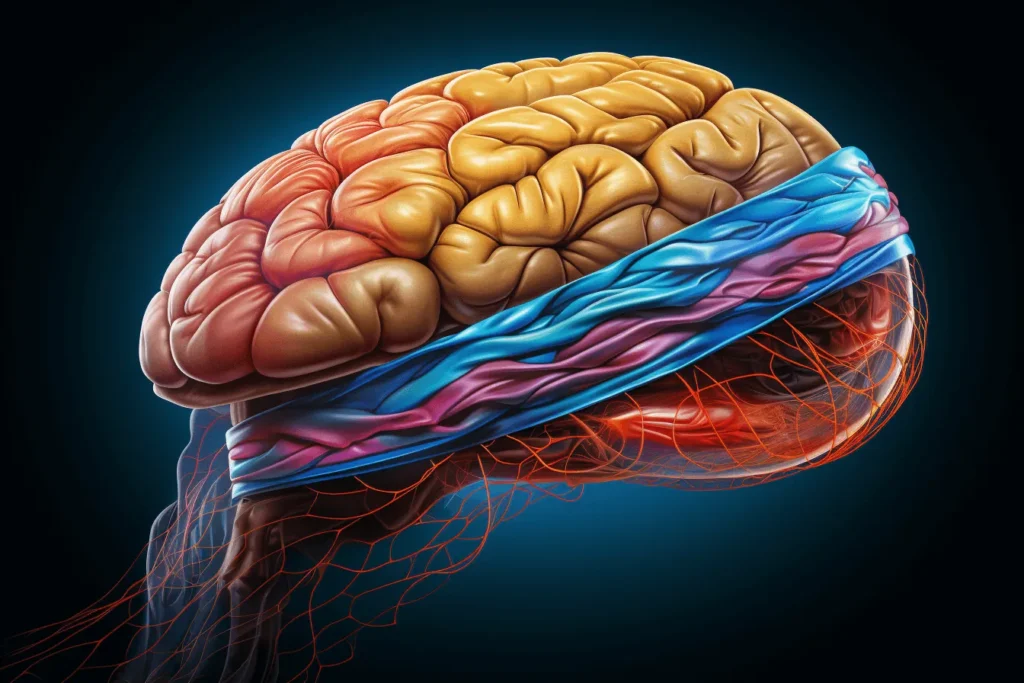
The belief that LSD can cause damage or changes to DNA originated in the 1960s and 1970s. This myth, as with the other psychedelic drug myths, was based on old studies that were poorly designed or lacked quality controls. One study, a systematic review published in 1971 and titled LSD and Genetic Damage, examined and refuted several others that showed such damage to chromosomes.
In that review, researchers found that three of the nine studies examined showed data that could not be confirmed, while nearly all of the studies had various flaws. The review study concluded that “From our own work and from a review of the literature, we believe that pure LSD ingested in moderate doses does not damage chromosomes in vivo, does not cause detectable genetic damage, and is not a teratogen or a carcinogen in man.”(9)
The studies that suggested LSD might cause chromosomal breaks were conducted in vitro (outside a living organism, like in a petri dish). Cells in a dish can behave differently than cells in a living organism, and results from in vitro studies don’t always translate to in vivo (within a living organism) effects. Many of these studies also used extremely high doses of LSD (in one case 10,000 micrograms per milliliter), doses often many thousands of times higher than a recreational dose. One can imagine that a 10000 mcg dose of LSD applied directly to cells in a petri dish may not have the same effect as a normal or even very high dose consumed by a person.(9)
In recent years, several LSD clinical studies have examined the white blood cells of participants and have found no evidence that LSD can alter or damage DNA.(9, 10)
Psychedelic Drug Myth Four: 2C-B Will Never Cause a Bad Trip
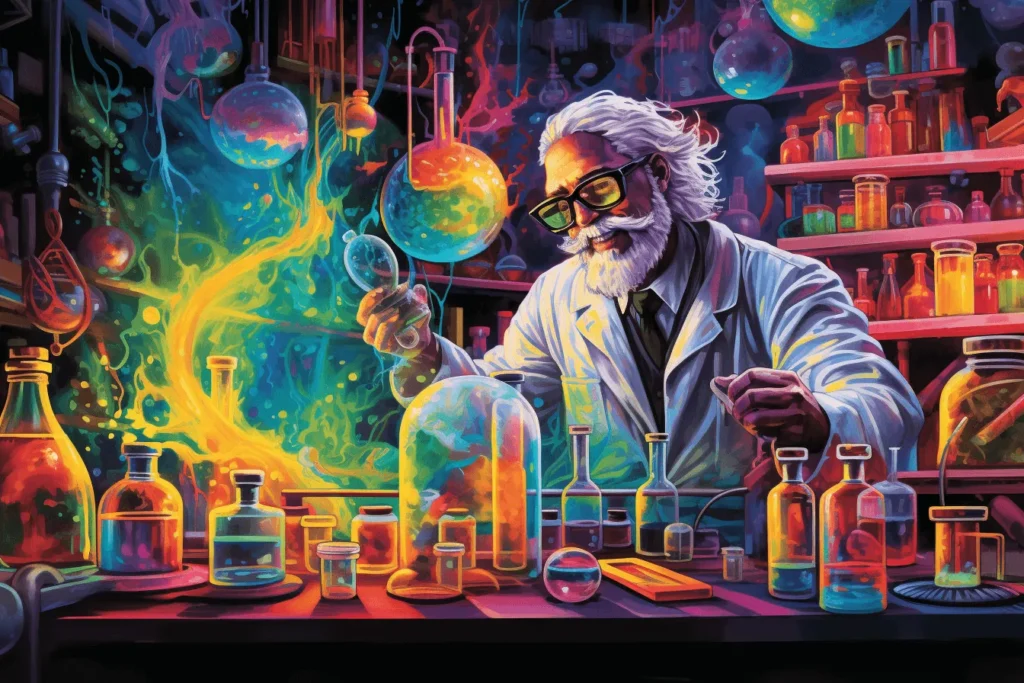
2C-B, a member of the 2C family of phenethylamines, was originally synthesized by chemist Alexander Shulgin. A prevalent myth surrounding 2C-B is its characterization as an “entirely safe” psychedelic, especially when compared to substances like LSD or psilocybin. While 2C-B is considered somewhat milder than other psychedelics, this perception can lead users to underestimate its effects, potentially resulting in unintended intense experiences or adverse psychedelic events (aka a bad trip).(14)
Like the other psychedelic drug myths on this list, the idea that 2C-B cannot cause a bad trip is false. The effects of 2C-B can vary significantly based on dosage and individual factors like age, gender, tolerance, mental state, and body weight. Lower doses might produce MDMA-like empathogenic effects, while higher doses can induce profound psychedelic experiences. This wide range of effects, combined with individual variations in sensitivity, means that what’s mild for one person might be overwhelming for another. Moreover, while 2C-B has a relatively low toxicity profile, it’s not without risks, especially when combined with other substances or taken when you are in a poor mindset or an undesirable setting.(14)
Alexander Shulgin, the inventor of 2C-B, describes several instances where he took a significant drug dose and had a difficult experience. Shulgin’s statements highlight that even someone with a great deal of knowledge and experience with a psychedelic can have a difficult trip and should serve as a cautionary tale for psychonauts who may be misinformed about the potential power of 2C-B.
“At high doses (above 30 mgs.), 2C-B is intensely hallucinogenic, and, like any major psychedelic, can be frightening for certain people. In small doses, it becomes a mild sensory enhancer but does not have the strongly empathogenic qualities that MDMA has.”
―Shulgin, A. T., & Shulgin, A. Pihkal: A chemical love story.
It’s worth noting that 2C-B hasn’t been studied as extensively as some other psychedelics. This lack of comprehensive research means we might not fully understand all its potential effects or risks. As with any psychoactive substance, it’s crucial to approach 2C-B with caution, respect, and a well-informed perspective instead of relying on oversimplified myths.(14)
Psychedelic Drug Myth Five: LSD Builds Up in The Spine and Causes FlashBacks
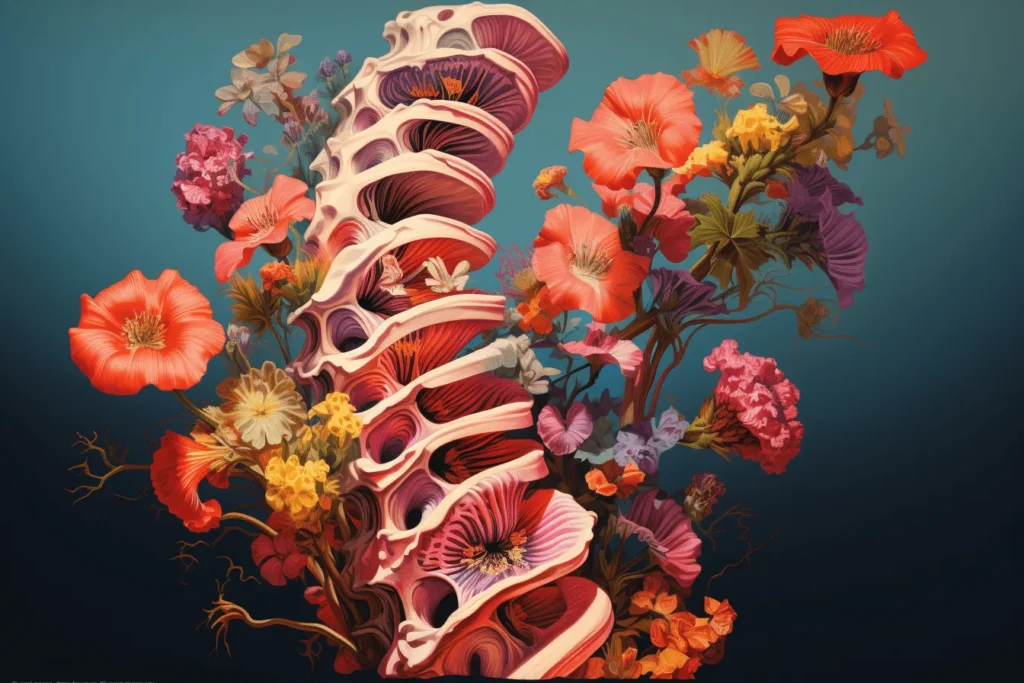
One of the most persistent myths surrounding LSD is the belief that the drug accumulates and remains stored in the spinal fluid or spine. This myth, another holdover from the Nixon era, claims that this buildup of spinal LSD causes flashbacks or other long-term effects years after consumption. This myth has been widely circulated, often accompanied by claims that cracking one’s back or neck might release stored LSD and induce a trip. However, scientific evidence does not support this belief.(11)
From a pharmacological perspective, LSD is metabolized by the liver and excreted through urine within hours to a few days after ingestion. The body efficiently processes and eliminates the drug, and it does not get stored in the spine or any other part of the body for extended periods. The idea that LSD could remain in the spinal fluid and then be “released” by a physical action like cracking the back is inconsistent with our understanding of physiology and pharmacokinetics.(11)
The origin of this myth is unclear. Still, it may be connected to early attempts to explain the phenomenon of “flashbacks,” where individuals experience a spontaneous recurrence of LSD-like effects without recent drug use. However, the exact cause of these rare events remains poorly understood and is not linked to the presence of LSD in the spine. As with many myths, the LSD/spine belief underscores the importance of relying on scientific evidence and rigorous research to inform you about the potential risks or benefits of using LSD or any other psychedelic.(11)
Psychedelic Drug Myth Six: You Don’t Need to Test Your Drugs
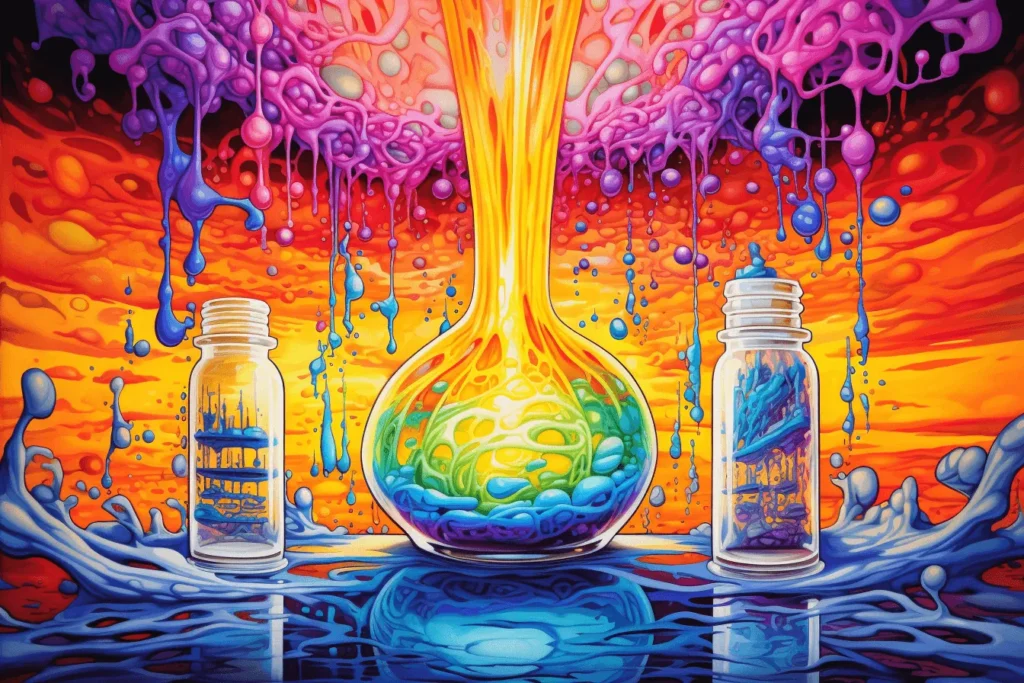
Another very common, and totally false, myth is the idea that you don’t need to test your drugs, or that you can just “trust your dealer.” Psychedelics, especially ones like LSD, 2C-B, and MDMA, can often be sold as pressed pills or powders. Both presses and powders are often adulterated with other substances, sometimes relatively benign things like caffeine or aspirin, but they can contain other dangerous drugs like opioids, methamphetamine, and fentanyl.
Furthermore, the potency of these drugs can vary widely between batches, and users might sometimes purchase a substance entirely different from what they intended. For instance, someone believing they’ve bought MDMA might actually receive a synthetic drug with vastly different effects and risks.
Testing not only ensures you are consuming what they believe they are but also empowers you to make informed decisions. By verifying the composition and potency, you can better gauge dosages, avoid dangerous drug combinations, and decide whether to consume the drug at all. This knowledge can significantly reduce the risk of overdose and adverse reactions.
Today, test kits are relatively inexpensive and can be obtained from several reputable sources such as DanceSafe, a non-profit harm reduction organization that offers both drug testing kits and fentanyl test strips. Testing your drugs isn’t just a good idea, it could save your life.
Psychedelic Drug Myth Seven: MDMA Will Drain Your Spinal Fluid
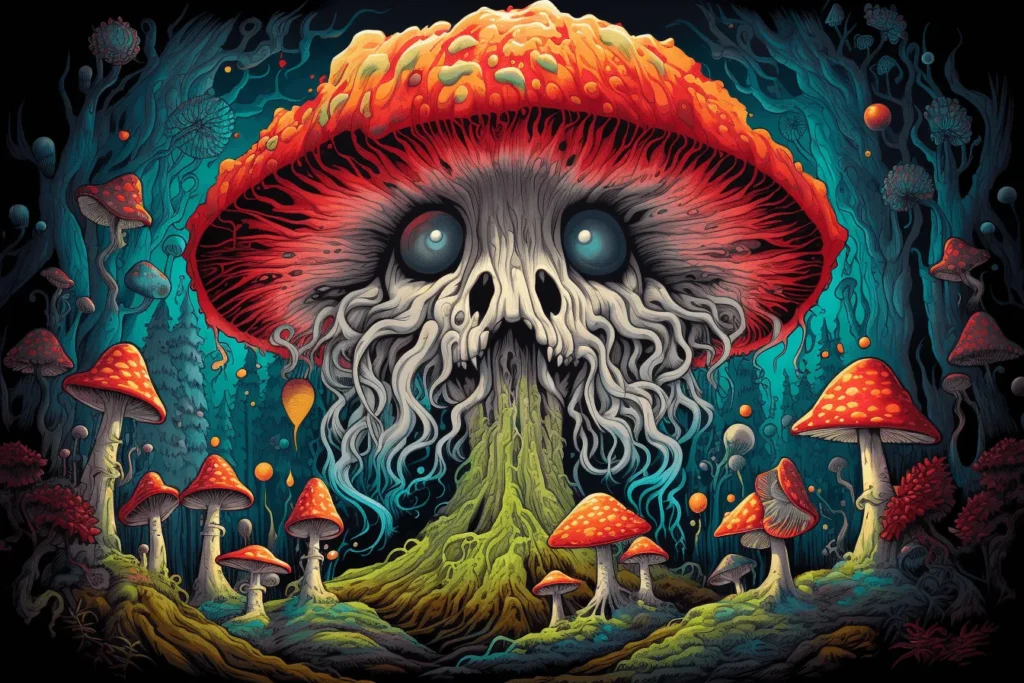
If you’re a child of the 80s and 90s, you’ve likely heard that MDMA will drain your spinal fluid. This myth, one frequently carried on by parents and even some family doctors, originates from a 1994 study that examined the breakdown of serotonin in spinal fluid. Due to a misunderstanding by the general public, the word quickly spread that MDMA use was somehow decreasing the amount of spinal fluid in users. This was, as with most myths, incorrect. It was the researchers themselves who were draining the fluid via spinal taps.(12)
Interestingly, the researchers did not have to retract their study, as the misinterpretation of the data was due entirely to public misunderstanding and media sensationalism. Cerebrospinal fluid is still used in studies today, as it contains a wealth of biological information that researchers can examine to determine what, if any, impact MDMA use has on certain neurotransmitters.(12, 13)
Psychedelic Drug Myth Eight: Psychedelics Are for Everyone
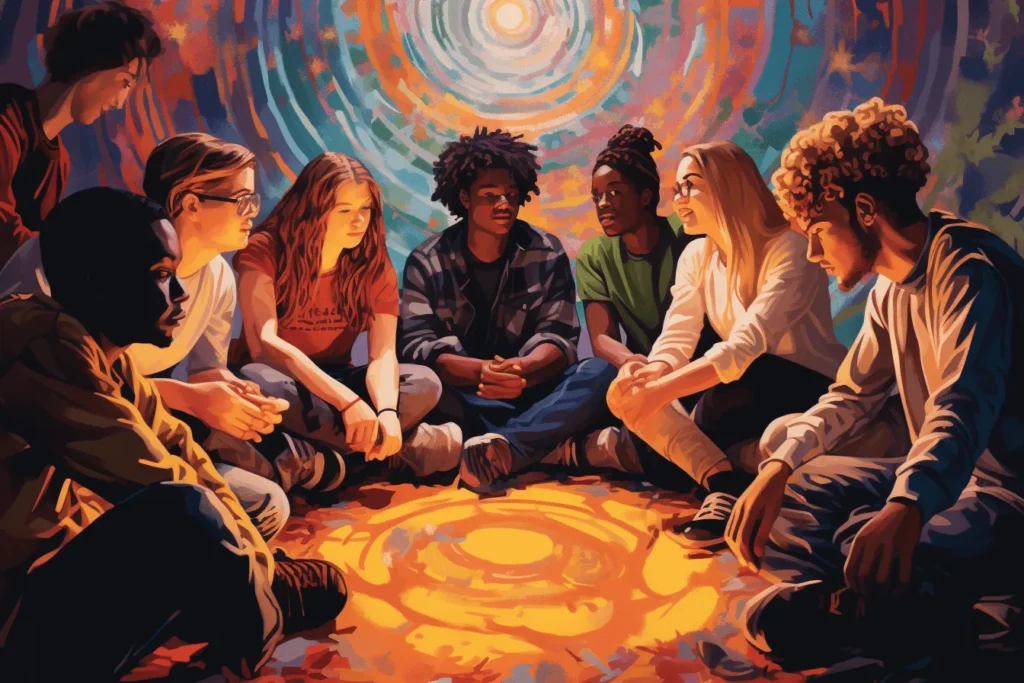
The resurgence of interest in psychedelics, both for therapeutic use and personal exploration, has led to various opinions about their safety. While many users and researchers attest to the profound benefits of LSD, psilocybin, and MDMA, claiming that they are universally safe for everyone is a myth. The effects and risks of psychedelics are influenced by a combination of the substance, the individual’s physical and psychological state, and the environment in which they’re consumed.(15)
Individual predispositions and family history significantly influence how one might react to psychedelics. People with a personal or family history of psychotic disorders, such as schizophrenia or psychosis, are at a higher risk of experiencing adverse psychological reactions (including bad trips), potentially triggering or exacerbating their condition. Similarly, those with certain heart conditions might be at risk when using stimulant psychedelics like 2C-B, or those that can increase heart rate and blood pressure.(15)
Secondly, mental health and emotional state during consumption can greatly influence the experience. Someone going through severe emotional distress, anxiety, or depression might face heightened risks of a challenging or traumatic experience. However, there are also instances where individuals in such states have reported therapeutic breakthroughs. It’s a delicate balance. For some, the risks can outweigh the benefits without proper guidance or a controlled setting.(15)
The concept of “set and setting” is paramount in psychedelic use. “Set” refers to one’s mindset, including expectations and emotional state, while “setting” pertains to the physical and social environment. An inappropriate setting or a negative mindset can turn a potentially beneficial experience into a harmful one. Psychedelics offer a wealth of potential benefits, both therapeutically and for personal growth, but they are not universally safe for everyone. Individual factors, mental health, and the context of use all play crucial roles in determining the outcome of a psychedelic experience. As research continues and our understanding deepens, it’s essential to approach these substances with respect, caution, and a commitment to harm reduction.
Like any drug or new medical intervention, psychedelics present the possibility for significant benefits and some dangers. If you are considering exploring the use of psychedelics for medicinal purposes, self-growth, or simply for recreation, you should approach them from the point of respect and after significant research. If used safely and responsibly, psychedelics can open the doors to your inner self, provide a glimpse of the profound, or simply add a new, interesting layer to your understanding of reality.
Safe travels.
Sources

1. Ly, C., Greb, A. C., Cameron, L. P., Wong, J. M., Barragan, E. V., Wilson, P. C., Burbach, K. F., Soltanzadeh Zarandi, S., Sood, A., Paddy, M. R., Duim, W. C., Dennis, M. Y., McAllister, A. K., Ori-McKenney, K. M., Gray, J. A., & Olson, D. E. (2018). Psychedelics Promote Structural and Functional Neural Plasticity. Cell Reports, 23(11), 3170–3182. https://doi.org/10.1016/j.celrep.2018.05.022
2. Catlow, B. J., Jalloh, A., & Sanchez-Ramos, J. (2016, January 1). Chapter 77 – Hippocampal Neurogenesis: Effects of Psychedelic Drugs (V. R. Preedy, Ed.). ScienceDirect; Academic Press. https://www.sciencedirect.com/science/article/abs/pii/B9780128002124000777
3. Argento, E., Socias, M. E., Hayashi, K., Choi, J., Mackay, L., Christie, D., Milloy, M-J., & DeBeck, K. (2022). Psychedelic use is associated with reduced daily opioid use among people who use illicit drugs in a Canadian setting. International Journal of Drug Policy, 100, 103518. https://doi.org/10.1016/j.drugpo.2021.103518
4. O’Dowd, A. (2006). Tobacco and alcohol should be classed as dangerous drugs. BMJ, 333(7562), 275.1. https://doi.org/10.1136/bmj.333.7562.275
5. Krebs, T. S., & Johansen, P.-Ø. (2013). Psychedelics and Mental Health: A Population Study. PLoS ONE, 8(8), e63972. https://doi.org/10.1371/journal.pone.0063972
6. Can psychedelic drugs, once banned, help relieve mental illness? (n.d.). AAMC. https://www.aamc.org/news/can-psychedelic-drugs-once-banned-help-relieve-mental-illness
7. Pincock, S. (2003). Science forced to retract article on “ecstasy.” BMJ : British Medical Journal, 327(7415), 579. https://www.ncbi.nlm.nih.gov/pmc/articles/PMC194116/
8. Mueller, F., Lenz, C., Steiner, M., Dolder, P. C., Walter, M., Lang, U. E., Liechti, M. E., & Borgwardt, S. (2016). Neuroimaging in moderate MDMA use: A systematic review. Neuroscience & Biobehavioral Reviews, 62, 21–34. https://doi.org/10.1016/j.neubiorev.2015.12.010
9. Dishotsky, N. I., Loughman, W. D., Mogar, R. E., & Lipscomb, W. R. (1971). LSD and genetic damage. Science (New York, N.Y.), 172(3982), 431–440. https://doi.org/10.1126/science.172.3982.431
10. Rudin, D., Areesanan, A., Liechti, M. E., & Gründemann, C. (2023). Classic psychedelics do not affect T cell and monocyte immune responses. Frontiers in Psychiatry, 14. https://doi.org/10.3389/fpsyt.2023.1042440
11. Gukasyan, N., Davis, A. K., Barrett, F. S., Cosimano, M. P., Sepeda, N. D., Johnson, M. W., & Griffiths, R. R. (2022). Efficacy and safety of psilocybin-assisted treatment for major depressive disorder: Prospective 12-month follow-up. Journal of Psychopharmacology, 36(2), 151–158. https://doi.org/10.1177/02698811211073759
12. McCann, U. D., Ridenour, A., Shaham, Y., & Ricaurte, G. A. (1994). Serotonin Neurotoxicity after (±)3,4-Methylenedioxymethamphetamine (MDMA; “Ecstasy”): A Controlled Study in Humans. Neuropsychopharmacology, 10(2), 129–138. https://doi.org/10.1038/npp.1994.15
13. Pardridge, W. M. (2011). Drug transport in brain via the cerebrospinal fluid. Fluids and Barriers of the CNS, 8(1). https://doi.org/10.1186/2045-8118-8-7
14. Mallaroni, P., Mason, N. L., J. Reckweg, Paci, R., Ritscher, S., Toennes, S. W., Theunissen, E. L., Kim, & Ramaekers, J. G. (2023). Assessment of the Acute Effects of 2C‐B vs. Psilocybin on Subjective Experience, Mood, and Cognition. Clinical Pharmacology & Therapeutics, 114(2), 423–433. https://doi.org/10.1002/cpt.2958
15. Friesen, P. (2022). Psychosis and psychedelics: Historical entanglements and contemporary contrasts. Transcultural Psychiatry, 136346152211291. https://doi.org/10.1177/13634615221129116
16. Bowers, M. B., & Swigar, M. E. (1983). Vulnerability to psychosis associated with hallucinogen use. Psychiatry Research, 9(2), 91–97. https://doi.org/10.1016/0165-1781(83)90030-6
This material is not intended as a replacement or substitute for any legal or medical advice. Always consult a medical professional about your health needs. Psychedelics are widely illegal in the United States, and readers should always be informed about local, state, and federal regulations regarding psychedelics or other drugs.
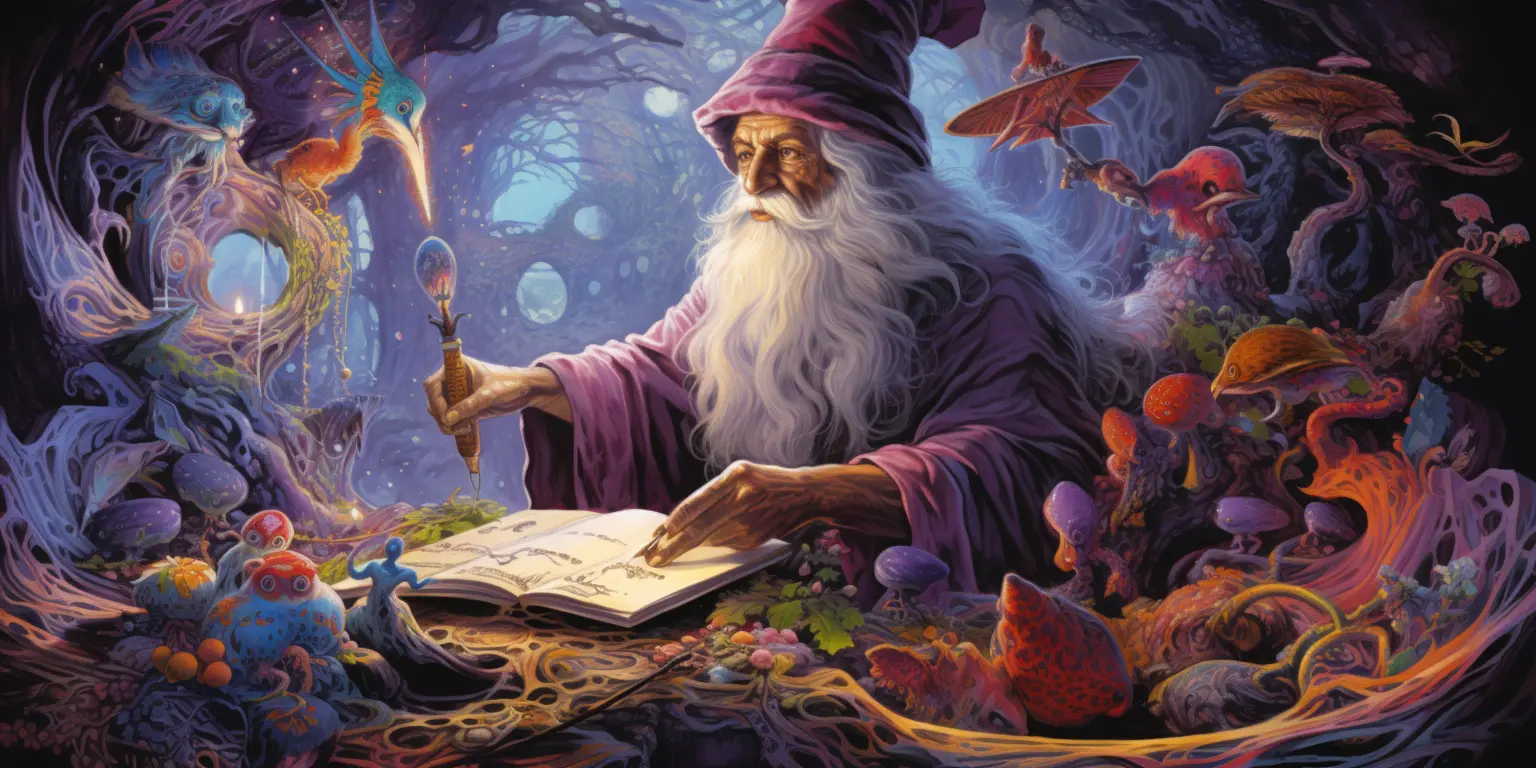
 David Connell
David Connell